Yuchen Huang
May
CultureCLIP: Empowering CLIP with Cultural Awareness through Synthetic Images and Contextualized Captions
Jul 08, 2025Abstract:Pretrained vision-language models (VLMs) such as CLIP excel in multimodal understanding but struggle with contextually relevant fine-grained visual features, making it difficult to distinguish visually similar yet culturally distinct concepts. This limitation stems from the scarcity of high-quality culture-specific datasets, the lack of integrated contextual knowledge, and the absence of hard negatives highlighting subtle distinctions. To address these challenges, we first design a data curation pipeline that leverages open-sourced VLMs and text-to-image diffusion models to construct CulTwin, a synthetic cultural dataset. This dataset consists of paired concept-caption-image triplets, where concepts visually resemble each other but represent different cultural contexts. Then, we fine-tune CLIP on CulTwin to create CultureCLIP, which aligns cultural concepts with contextually enhanced captions and synthetic images through customized contrastive learning, enabling finer cultural differentiation while preserving generalization capabilities. Experiments on culturally relevant benchmarks show that CultureCLIP outperforms the base CLIP, achieving up to a notable 5.49% improvement in fine-grained concept recognition on certain tasks, while preserving CLIP's original generalization ability, validating the effectiveness of our data synthesis and VLM backbone training paradigm in capturing subtle cultural distinctions.
MMBoundary: Advancing MLLM Knowledge Boundary Awareness through Reasoning Step Confidence Calibration
May 29, 2025Abstract:In recent years, multimodal large language models (MLLMs) have made significant progress but continue to face inherent challenges in multimodal reasoning, which requires multi-level (e.g., perception, reasoning) and multi-granular (e.g., multi-step reasoning chain) advanced inferencing. Prior work on estimating model confidence tends to focus on the overall response for training and calibration, but fails to assess confidence in each reasoning step, leading to undesirable hallucination snowballing. In this work, we present MMBoundary, a novel framework that advances the knowledge boundary awareness of MLLMs through reasoning step confidence calibration. To achieve this, we propose to incorporate complementary textual and cross-modal self-rewarding signals to estimate confidence at each step of the MLLM reasoning process. In addition to supervised fine-tuning MLLM on this set of self-rewarded confidence estimation signal for initial confidence expression warm-up, we introduce a reinforcement learning stage with multiple reward functions for further aligning model knowledge and calibrating confidence at each reasoning step, enhancing reasoning chain self-correction. Empirical results show that MMBoundary significantly outperforms existing methods across diverse domain datasets and metrics, achieving an average of 7.5% reduction in multimodal confidence calibration errors and up to 8.3% improvement in task performance.
Vision-Language Models Are Not Pragmatically Competent in Referring Expression Generation
Apr 22, 2025
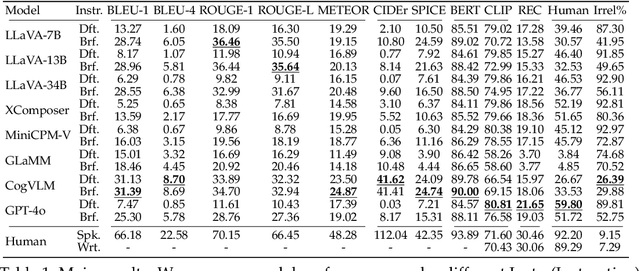

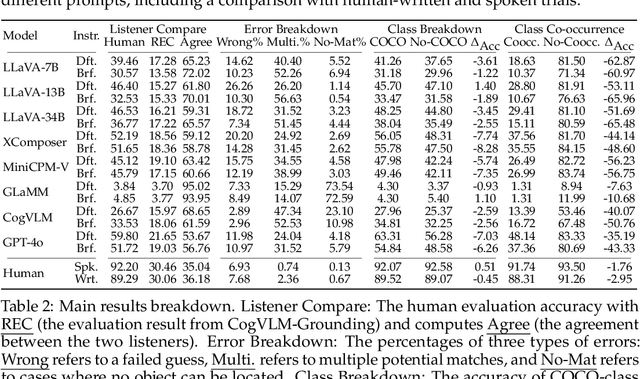
Abstract:Referring Expression Generation (REG) is a core task for evaluating the pragmatic competence of vision-language systems, requiring not only accurate semantic grounding but also adherence to principles of cooperative communication (Grice, 1975). However, current evaluations of vision-language models (VLMs) often overlook the pragmatic dimension, reducing REG to a region-based captioning task and neglecting Gricean maxims. In this work, we revisit REG from a pragmatic perspective, introducing a new dataset (RefOI) of 1.5k images annotated with both written and spoken referring expressions. Through a systematic evaluation of state-of-the-art VLMs, we identify three key failures of pragmatic competence: (1) failure to uniquely identify the referent, (2) inclusion of excessive or irrelevant information, and (3) misalignment with human pragmatic preference, such as the underuse of minimal spatial cues. We also show that standard automatic evaluations fail to capture these pragmatic violations, reinforcing superficial cues rather than genuine referential success. Our findings call for a renewed focus on pragmatically informed models and evaluation frameworks that align with real human communication.
pTSE: A Multi-model Ensemble Method for Probabilistic Time Series Forecasting
May 16, 2023



Abstract:Various probabilistic time series forecasting models have sprung up and shown remarkably good performance. However, the choice of model highly relies on the characteristics of the input time series and the fixed distribution that the model is based on. Due to the fact that the probability distributions cannot be averaged over different models straightforwardly, the current time series model ensemble methods cannot be directly applied to improve the robustness and accuracy of forecasting. To address this issue, we propose pTSE, a multi-model distribution ensemble method for probabilistic forecasting based on Hidden Markov Model (HMM). pTSE only takes off-the-shelf outputs from member models without requiring further information about each model. Besides, we provide a complete theoretical analysis of pTSE to prove that the empirical distribution of time series subject to an HMM will converge to the stationary distribution almost surely. Experiments on benchmarks show the superiority of pTSE overall member models and competitive ensemble methods.
Hierarchical Capsule Prediction Network for Marketing Campaigns Effect
Aug 22, 2022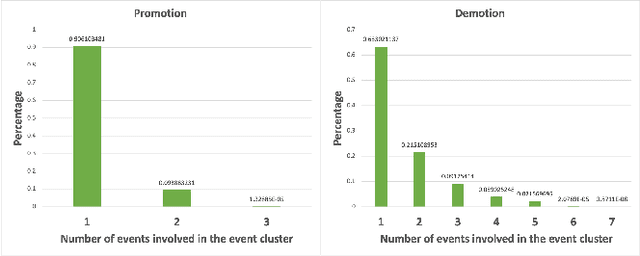
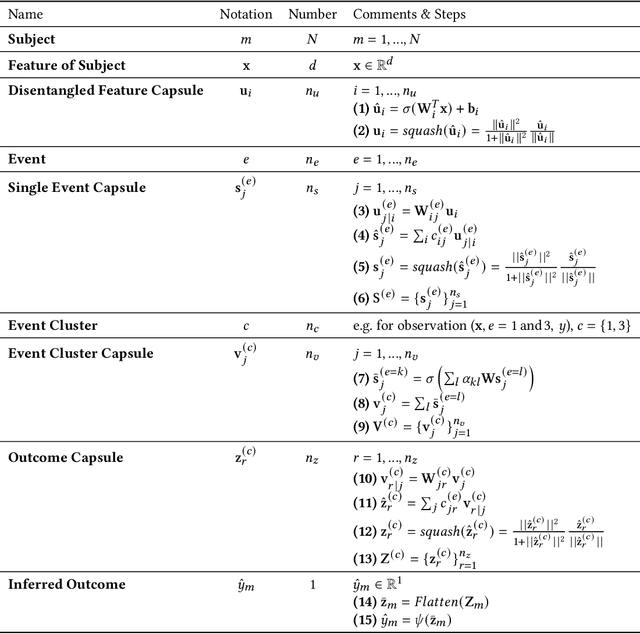
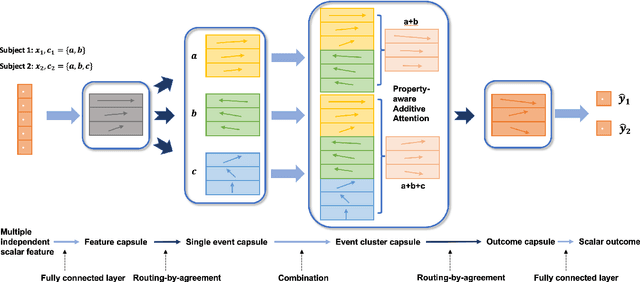
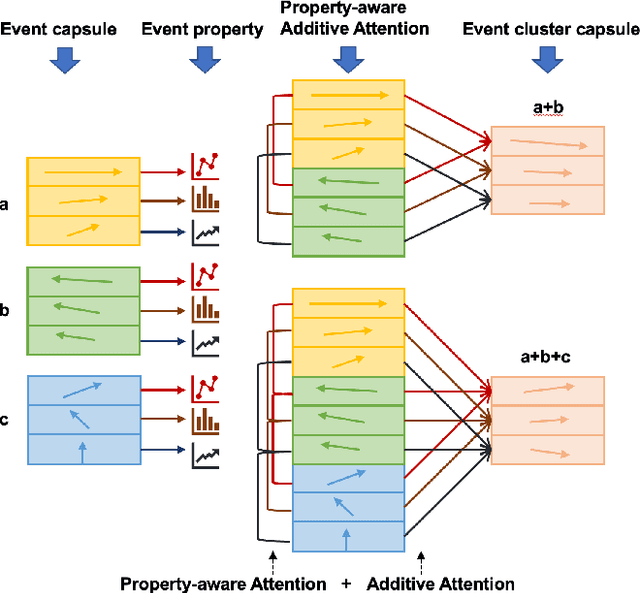
Abstract:Marketing campaigns are a set of strategic activities that can promote a business's goal. The effect prediction for marketing campaigns in a real industrial scenario is very complex and challenging due to the fact that prior knowledge is often learned from observation data, without any intervention for the marketing campaign. Furthermore, each subject is always under the interference of several marketing campaigns simultaneously. Therefore, we cannot easily parse and evaluate the effect of a single marketing campaign. To the best of our knowledge, there are currently no effective methodologies to solve such a problem, i.e., modeling an individual-level prediction task based on a hierarchical structure with multiple intertwined events. In this paper, we provide an in-depth analysis of the underlying parse tree-like structure involved in the effect prediction task and we further establish a Hierarchical Capsule Prediction Network (HapNet) for predicting the effects of marketing campaigns. Extensive results based on both the synthetic data and real data demonstrate the superiority of our model over the state-of-the-art methods and show remarkable practicability in real industrial applications.
 Add to Chrome
Add to Chrome Add to Firefox
Add to Firefox Add to Edge
Add to Edge